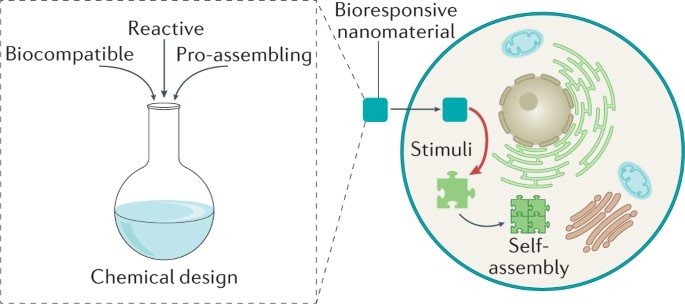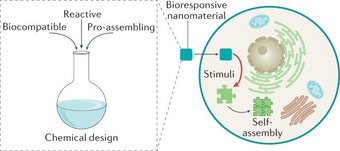Designing bioresponsive nanomaterials for intracellular self-assembly
Imitating nature's supramolecular assemblies inside cells is a challenging task that could help advance nanomedicine and synthetic biology. This review highlights recent advances in the design of synthetic materials for intracellular self-assembly.
Supramolecular assemblies are abundant in nature. These dynamic nanostructures made of proteins, lipids or oligonucleotides fulfill many biological purposes within a cellular environment and serve as inspiration for synthetic materials designed for intracellular self-assembly. This review highlights recent progress in the development of bioresponsive nanomaterials capable of exploiting biological triggers to form complex functional architectures inside living cells.
For more information, feel free to have a look at the original article.

